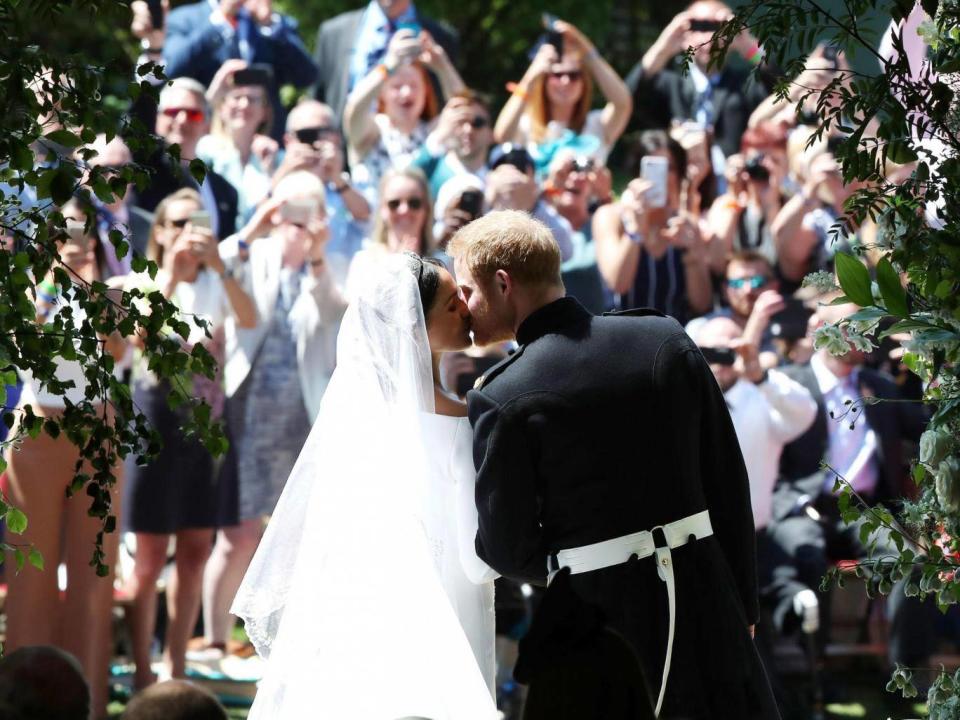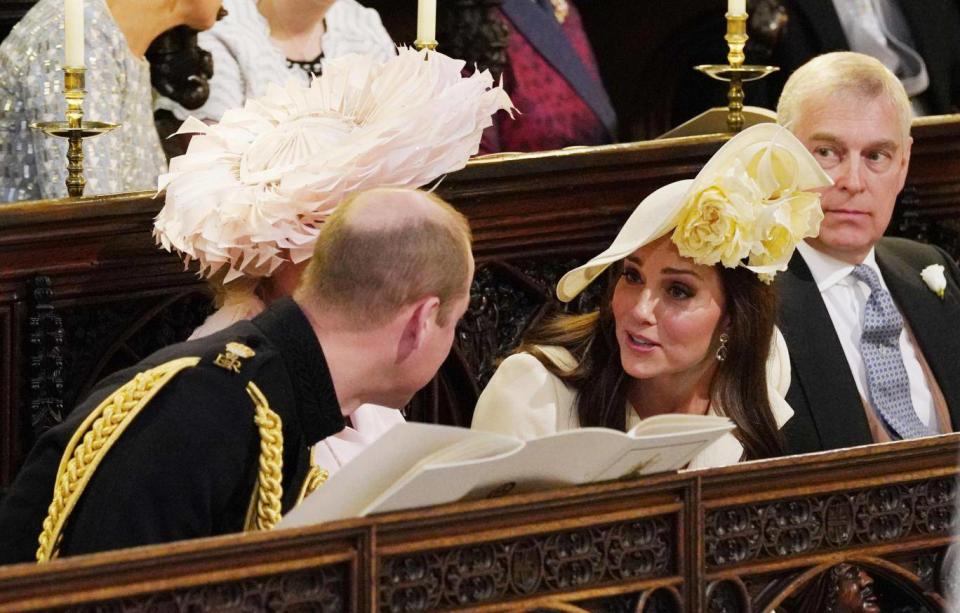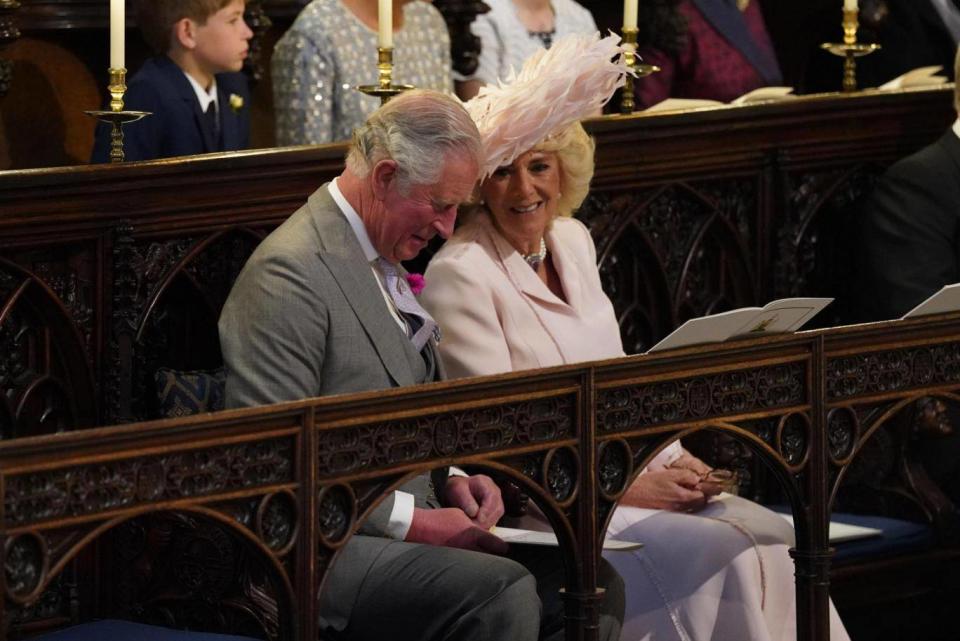A little less deference, a lot more diversity – royal pomp recast for modern Britain
So there we have it: the past, present and future of the British monarchy. In St George’s Chapel, Windsor, five centuries old, the burial place of Charles I, Prince Albert and the Queen Mother, under the banners of the Order of the Garter established by Edward III in 1344, watched by the Queen (92) and Prince Philip (97 next month, new hip), the wedding of Harry and Meghan was as modern an affair as this weight of tradition could allow.
Much has been written about Meghan being a “strong and independent woman”, but plainly Harry knows what kind of a national institution he wishes to be a part of as well. The House of Windsor is evolving before our eyes.
In the words of one of the ecstatic crowd of 50,000 “fans” around Windsor Castle, Britain has its “first royal of colour”. More than that, Meghan has the making of becoming a truly stellar figure and the last component of the “Fab Four” to be cemented into place. We will be hearing even more about the Sussexes and the Cambridges from now on, with Harry and Meghan on a special mission to make the Commonwealth a bit more relevant and cool. Depending on where you stand on the question of the monarchy, that is the either very bad or very good news.
It went well. No one tripped up, literally or metaphorically, least of all the bride, despite the five-metre veil of her dress (by Clare Waight Keller for Givenchy). She uttered her wedding vows with just a touch of theatrical emphasis, and was, as the wildly enthusiastic crowds acknowledged, charming throughout.
Indeed, between her and Harry this was probably the giggliest royal wedding ever, though Harry also touchingly wiped away a tear or two. The Archbishop of Canterbury seemed the nerviest of the participants. Meghan’s mother, Doria Ragland, was as graceful and composed as any of the members of the Windsor clan, who are rather more used to such pageantry. Meghan and Doria seemed to enjoy their time being walked around by the fogeyish Prince of Wales. The least he could do, really.

Most strikingly, this was a multicultural, multiracial, multinational occasion and much more so than any other ceremony associated with the royal family. It was, in a sense, a “moment”, with an American preacher and a gospel choir, and the creation, in as natural and harmonious a way possible, of a royal family seeking to look and sound just a little more like the nation that they aspire to reign over – to, in other words, earn their privilege.
When that preacher, the Most Rev Michael B Curry, took wing on flight of fancy involving Martin Luther King, the power of fire, Instagram, the internal combustion engine, and the power of love, Camilla looked more than usually bewildered, Zara Phillips was plain gobsmacked, and was I dreaming that when he made a reference to “social dysfunction”, he was looking straight at Fergie?
The Duchess of York’s presence, even as a “celeb” rather than a proper royal, and left to sit away from Prince Andrew, Beatrice and Eugenie, was a small symbol of some Christian forgiveness breaking out somewhere. Or maybe she just gatecrashed it.
The music was well chosen: we had “Guide me, O Thou Great Redeemer”, but we also enjoyed “Stand By Me”. This was innovative mood music.
Obviously a great swathe of the guests were drawn from the top drawer of British society: privately educated, rich, double-barrelled, plummy accents, privileged, Old Etonian chums of Harry, court hangers-on, men in scarlet tunics and cocked hats with ostrich feathers, Princess Michael of Kent – all that. But there was some sense that this was a bit of a turning point.

It was also a “moment” when royalty took another step to converging with celebrity. Because the decision was taken to move away from the traditions of a “state” ceremony we had to do without the glittering presence of, for example, John and Sally Bercow, or Michael Gove and Sarah Vine. Instead we made do with Amal and George Clooney, Posh’n’Becks, Serena Williams, Oprah Winfrey, James Corden and the cast of Suits.
During the wait for the bride we saw Earl Spencer (Diana’s side of the family were well represented) standing on the tomb of Henry VIII and Jane Seymour, chatting to Idris Elba as if it were the most natural thing in the world. Perhaps it is these days, now that Diana's Boys are taking over The Firm.
Harry and Meghan may have been given the archaic sounding titles of Duke and Duchess of Sussex, live in palaces and be transported around in vintage Rolls-Royces and horse-drawn landaus, but the process of modernisation is only just beginning.
Some will hate this; for the moment though, the mood is good. There was genuine affection for the pair, way beyond the slightly unhinged individuals who voluntarily become homeless and sleep rough just to get a glimpse of the royal procession. These, by the way, provided much of the entertainment for the rolling news services during the many lacunae – for television, like nature, abhors a vacuum, as when the usually measured Sky royal expert Alastair Bruce reflected that “it’s a wonder what a good lawnmower can do with grass”.
By the same token, for crowds starved of so much as a whiff of a minor royal, Sky’s Kay Burley was the next best thing – the people’s presenter, there for us with the hand of history on her shoulder. She met people from all over – Guildford, Saskatchewan, the Philippines, New York, Leeds and, er, Slough. Kiddies dressed as brides were scooped up by the Mother Theresa of Isleworth for the benefit of the cameras and posterity. She meant well.
By contrast, Huw Edwards took on the demeanour of a kindly Welsh GP on a house call to a family suffering from a nasty bout of royal fever. He quietly encouraged infants to do their party turn in a display so sugary it would give you type 2 diabetes just by watching it. His colleague Kirsty Young couldn’t help herself from telling us that Tom Bradby “looked like he had a good night’s sleep” – seeing as he was a guest at the wedding but has been suffering from insomnia and was unable to be lead anchor for the rival ITV coverage. A bit cruel, that.
Why does any of this matter, even?

As the Queen understands very well, and has publicly acknowledged from time to time, the British monarchy survives only with the support of the people. After all, even the most traditionally minded no longer subscribe to the divine right of kings, which rather did for Charles I.
So the greatest constitutional and political significance of the marriage of Harry and Meghan lies in how it will help or hinder continuing public assent for the monarchy as an institution in an evolving constitutional monarchy.
There are of course many aspects to this, plenty of zealotry on all sides and, truth be told, a degree of public indifference too, as evidenced in the relatively modest number of street parties. The crowds in Windsor were not representative. Meghan’s personal background is still objected to by some, tellingly revealed by some unpleasant postings on social media – but she is also embraced by many others keen on highlighting how the match embodies, legitimises and symbolises the multicultural society Britain has become.
There are other important questions for the future prompted by this royal event. How should the expanding royal family interact with an ever curious, to put it politely, media? What if any role can they – let us say Meghan's father Thomas and half-sister Samantha – assume? How many of the ever fertile extended Windsor tribe should be publicly subsidised? Is a monarchy in any form compatible with a meritocracy?
Public support for the monarchy cannot be assumed. Under the extravagant Prince Regent, in the early secluded widowhood of Victoria in the 1860s, in the Abdication Crisis that ended Edward VIIIs reign in 1936, and after the death of Diana in 1997, it was openly ridiculed and reviled, and lucky to survive.

At the dawn of the Queen’ reign 65 years ago, support for the monarchy was near universal: around 90 per cent of the public supported it, with only a handful of communists and Cromwellian eccentrics preferring an elected head of state. Indeed it was viewed with a degree of mysticism: a significant proportion of the public at the time of the 1953 Coronation believed that the Queen has not been born in the same way as other mortals, and had emerged via some sort of egg or bubble.
Since then, British society has been transformed: vastly less deferential, more multicultural, better educated and wealthier, better informed about gynaecology, and with a far nastier media.
That the House is Windsor has managed to survive the embarrassing collapse of so many of its marriages, and the accompanying intimate revelations about sexual affairs, arguments about paying its taxes and the crisis of confidence after the death of Diana, is remarkable. Since a low point of popularity running roughly from the Diana funeral in 1997 to the marriage of Charles and Camilla in 2005, its popularity has, as the wedding demonstrated, recovered.
That is much to do with the activities of the younger royals. Harry could easily have been a drag on that. Here is a young man associated with academic underperformance, smoking dope, dressing up as a Nazi and falling out of nightclubs – but who has cleaned up his act, apparently, an almost biblical tale of redemption.

That William and Harry have helped keep The Firm going is, in turn, probably due to their skilful cultivation of their royal/celeb status for charitable work, and apparently blameless private lives (in such stark contrast to the previous generation).
The weakest link is now the Prince of Wales, who Diana prophesied would never be king. He is pushing 70 and still plotting to make his former mistress Camilla his Queen Consort. That, in the not too distant future, will be the next royal crisis.
The great 19th century journalist and constitutional expert Walter Bagehot wrote in his famous 1867 introduction to The English Constitution: “A princely marriage is the brilliant edition of a universal fact, and, as such, it rivets mankind.” It says much for the grip the monarchy has exercised over the imagination of the British that that sentiment rings true even today; we also now have, in effect if not formally, a new princess to whom it also applies. The monarchy has acquired a powerful new asset.

 Yahoo News
Yahoo News 
